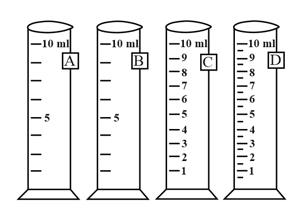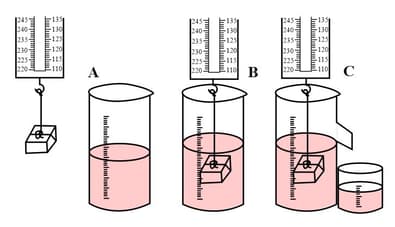Priyanka B Solutions for Chapter: Gravitation, Exercise 10: Multiple Choice Questions (MCQs)
Priyanka B Physics Solutions for Exercise - Priyanka B Solutions for Chapter: Gravitation, Exercise 10: Multiple Choice Questions (MCQs)
Attempt the practice questions on Chapter 3: Gravitation, Exercise 10: Multiple Choice Questions (MCQs) with hints and solutions to strengthen your understanding. Essentials of PHYSICS Class IX solutions are prepared by Experienced Embibe Experts.
Questions from Priyanka B Solutions for Chapter: Gravitation, Exercise 10: Multiple Choice Questions (MCQs) with Hints & Solutions
From measuring cylinders with different least counts are shown in Fig. and . The most suitable cylinder for determining the volume of a cube side nearly is.
While determining the density of a copper piece using a spring balance and a measuring cylinder, Nitin carried out the following procedure :
(i) Noted the water level in the measuring cylinder without the copper piece.
(ii) Immersed the copper piece in the water.
(iii) Noted the water level in the measuring cylinder with the copper piece inside it.
(iv) Removed the copper piece from the water and immediately weighed it using a spring balance.
The wrong step in the produce is :
To observe and compare the pressure exerted by solid cuboid in its upright position, student placed the cuboid gently on the loose sand while placed it on the surface of table top. Who will observe the exerted pressure by cuboid easily?
When a body sinks in a liquid the weight of the body is:
Four measuring cylinders with different least counts are shown in and . The most suitable cylinder for determining the volume of a cube of side nearly is :

When a body is immersed in a liquid, the buoyant force acts on the body :
The readings of the spring balance will be
The same body is immersed in two liquids and in succession. The extent to which the body sinks in liquid is less than in liquid . What are the conclusions that could be derived from such an observation?

